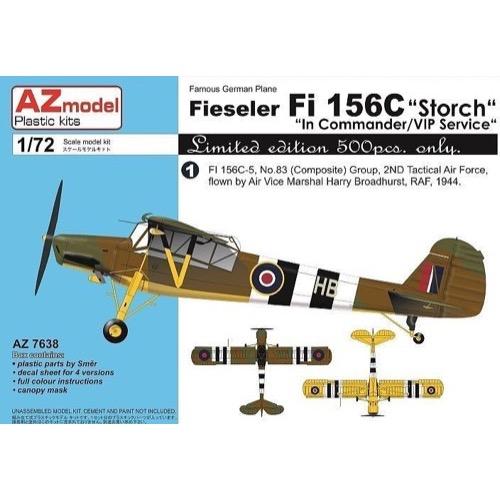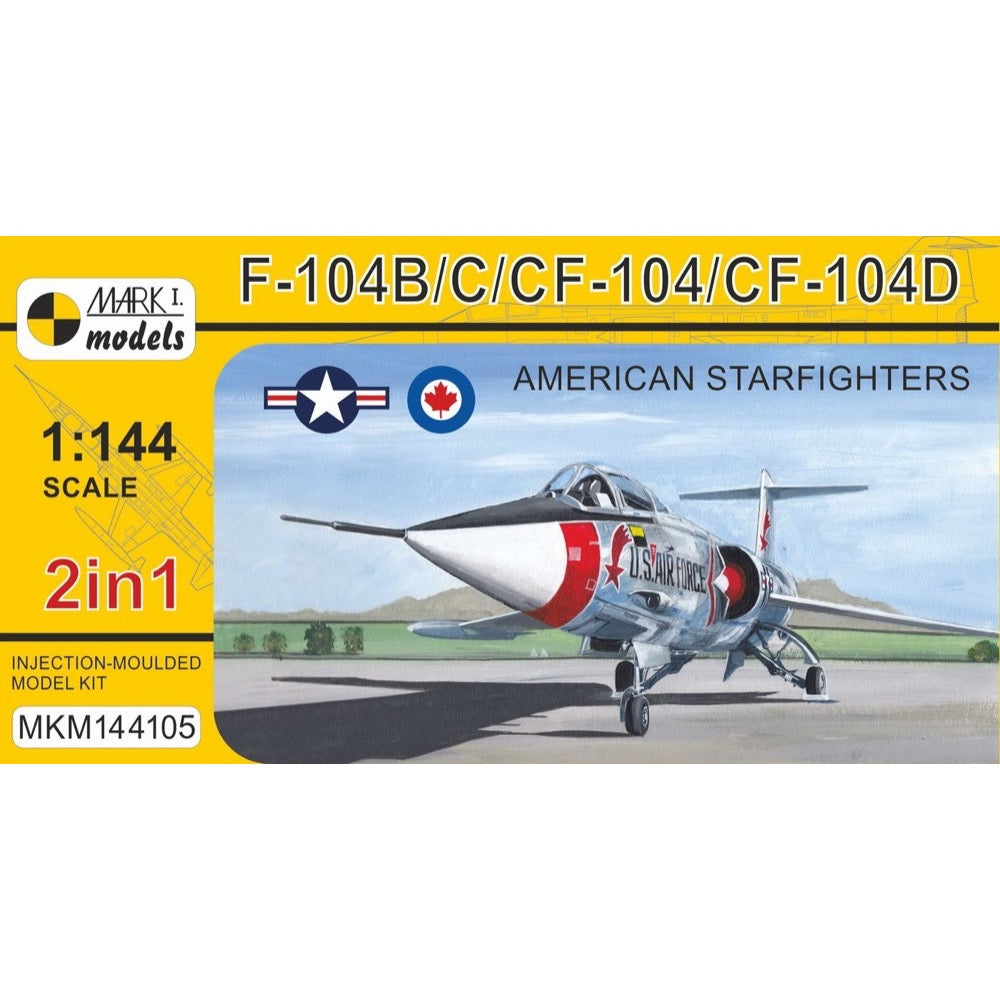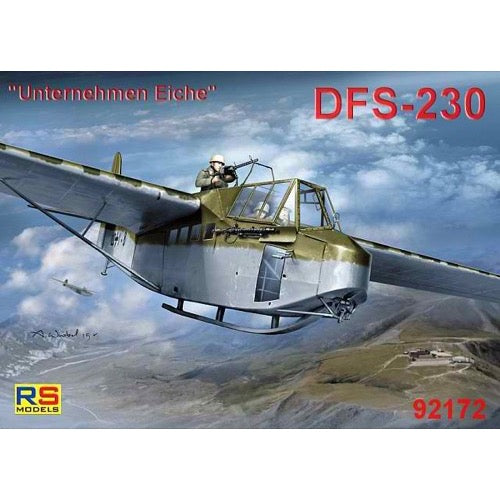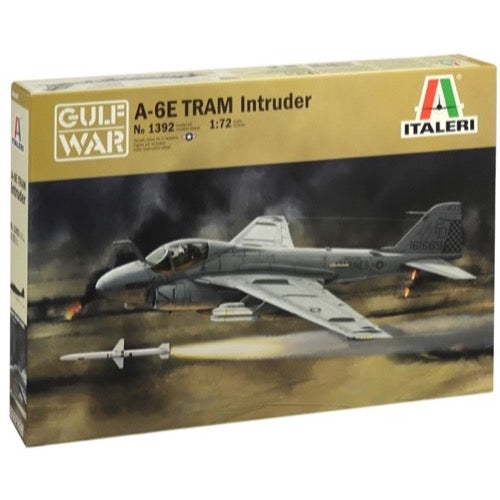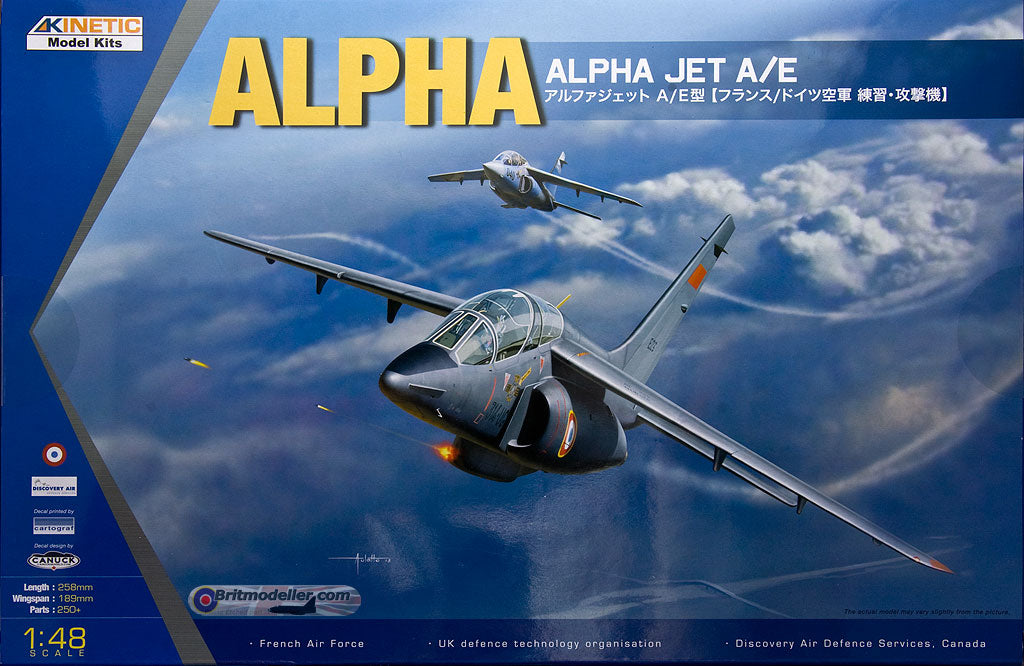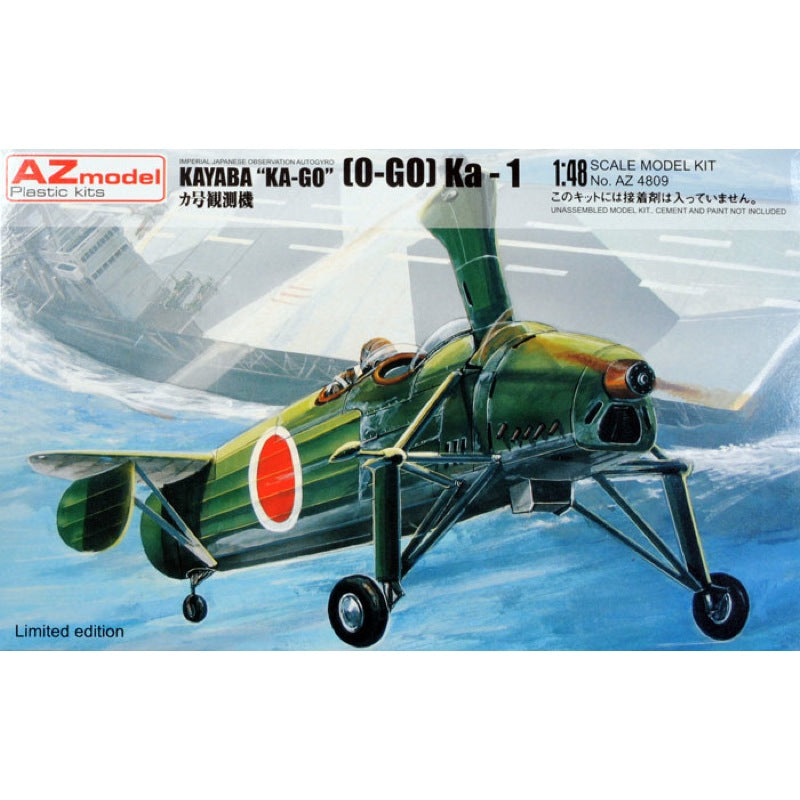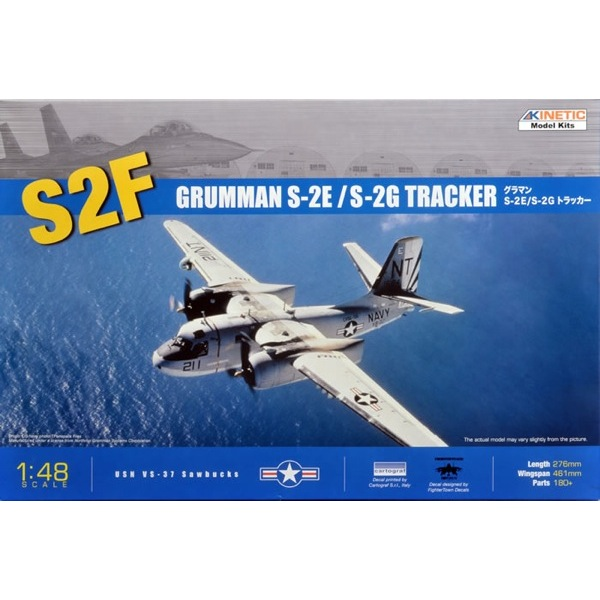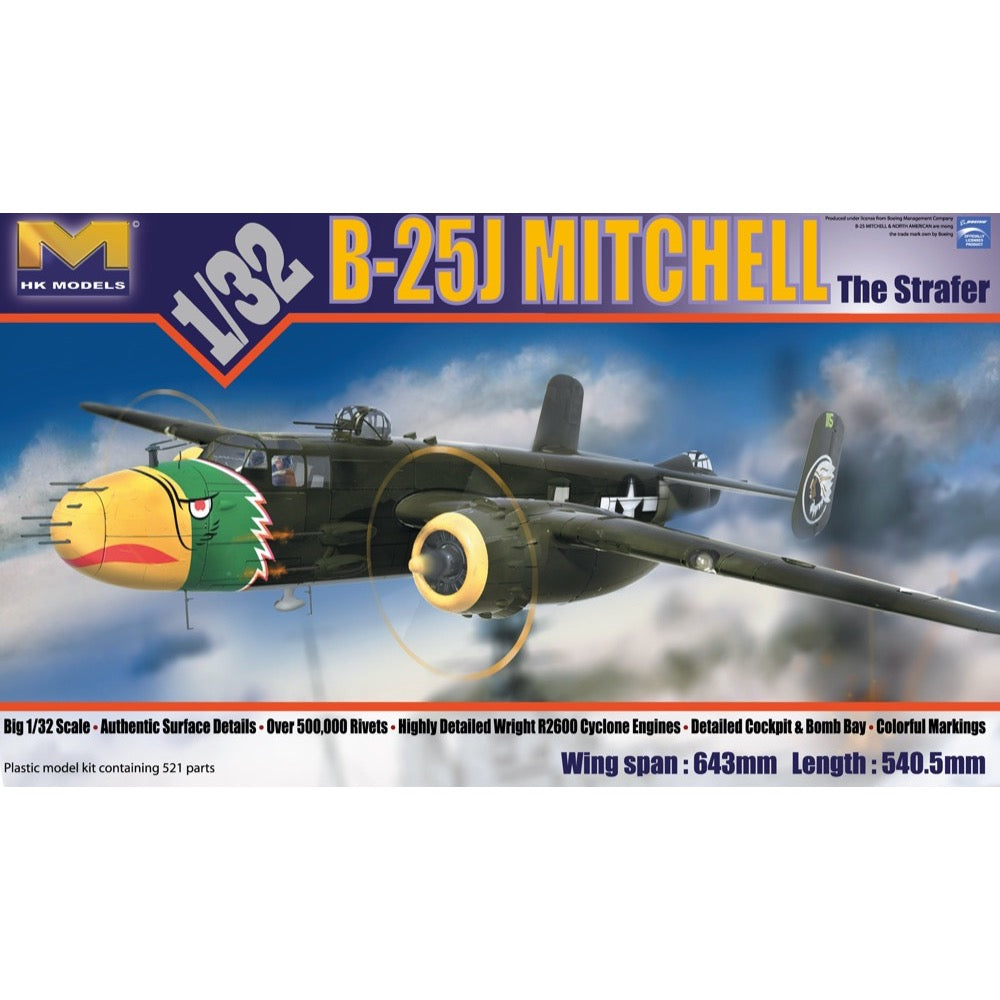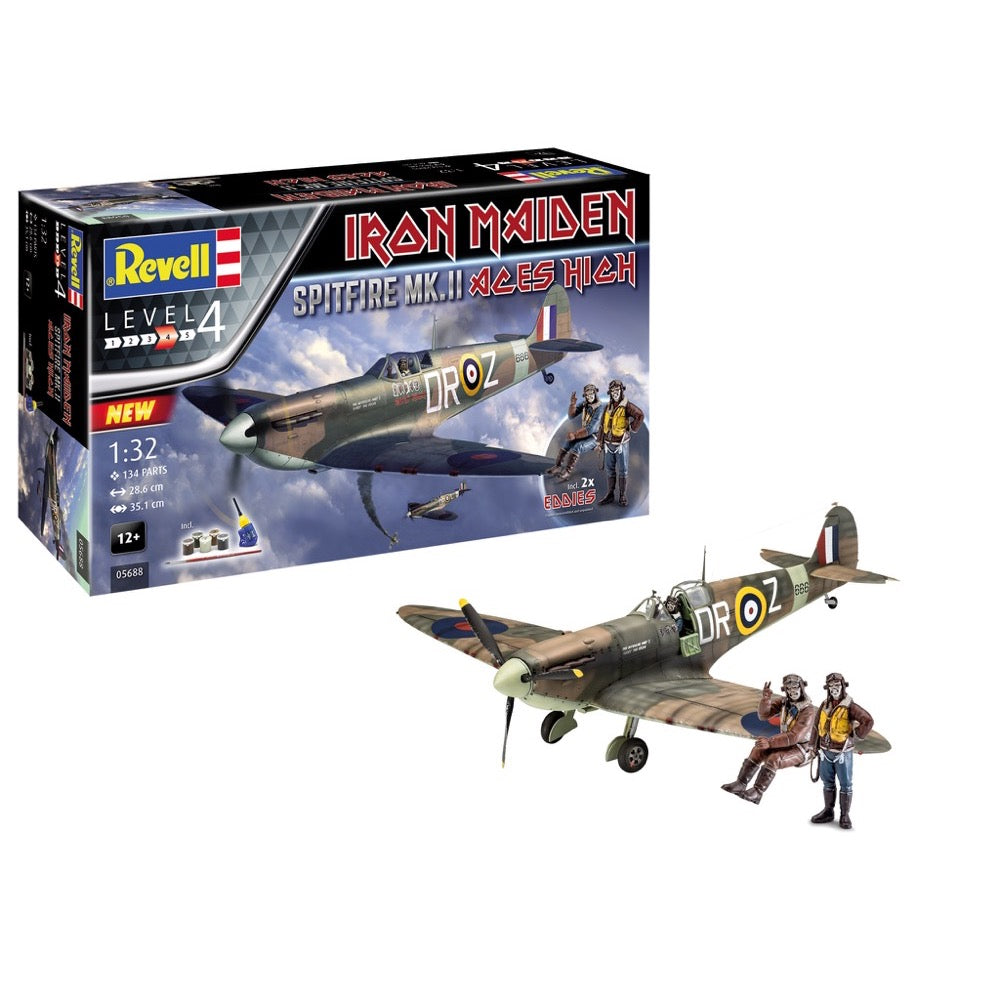
Revell 05688 1/32 Supermarine Spitfire Mk.II Iron Maiden Gift Set
34.00
$
<h3>Gifts for Dad wanted? Surprise him with the Spitfire "Aces High" in the Edition Iron Maiden!</h3>
<p>The Spitfire of Supermarine was one of the most built aircraft in the world. Its high speed, reliability and above all its enormous manoeuvrability made it the most popular fighter aircraft of all time. During the "Battle of Britain", the air battle for England, their deployment ensured the glorious victory of the British Air Force. It is no wonder that another legend has set a musical monument to this legend of heaven: The heavy metal band Iron Maiden with their super hit "Aces High" on their album "Powerslave" from 1984. The model kit Spitfire Mk.II "Aces High" Iron Maiden therefore belongs to the category Top Gifts for Dad!</p>
<h3>Spitfire and Iron Maiden - the legends live!</h3>
<p>Today there are still about 40 of the legendary Spitfire in airworthy condition worldwide. Plus one that still floats above the heads of the six heavy metal musicians at the concerts of Iron Maiden as a full-size model.</p>
<p>In principle, a song should not be missing when the guitars imitate the full hum of the airplane's engine: "Aces High", the anthem for the daring flight of the Battle of England.</p>
<p>At the latest then Daddy's fingers automatically form the sign of all hard rockers, the "Devils Horn", his eyes get a bit wet, and from full throat he sings along the line that accompanied him part of his way: "Live to fly! Fly to live! Aces high ..."</p>
<p>This is the best opportunity for anyone who is still looking for a gift for dad of a very special kind - a model kit for hours of fun.</p>
<h3>With this gift idea the heart of the rocker beats higher</h3>
<p>The Spitfire Mk.II "Aces High" Iron Maiden in scale: 1:32 brings fun and the best memories from the beginning. Their details, for example in the cockpit and on the radiator, the movable propeller and the faithful decals for the Aces High version leave nothing to be desired.</p>
<p>piece by piece, the legend is brought to life during assembly. A total of 115 individual parts gradually assemble to a length of 28.6 cm and an impressive span of the wings of 35.1 cm.</p>
<p><strong>The finished model impresses with numerous extras. Among other things:</strong></p>
<ul>
<li>Detailed cockpit with instrument panel</li>
<li>Detailed seat suspension</li>
<li>Separate entrance door</li>
<li>Detailed coolers</li>
<li>Moving propeller</li>
<li>Detailed chassis</li>
<li>Divided pulpit glazing</li>
<li>Original colors and images</li>
</ul>
<p>If the corresponding album is still running in the background, you have found one of the gifts for Daddy that will accompany him forever - just like the music of Iron Maiden.</p>
<h3>Heavy Metal, Air Force Races and Eddie the Head</h3>
<p>What would Iron Maiden be without their famous mascot "Eddie the Head"? To make the model of the Spitfire Mk.II even more reminiscent of the hard rockers, a sitting Eddie pilot figure for the cockpit as well as a standing Eddie figure, which impressively show what true heroes are, are included in the scope of delivery.</p>
<p><strong>The best gifts for dad: fun for many hours and heavy metal at its best</strong></p>
<ul>
<li>The model building set Spitfire Mk.II "Aces High" Iron Maiden contains:</li>
<li>115 detailed parts of the legendary Spitfire Mk.II</li>
<li>adhesives and paints for easy assembly</li>
<li>Brush</li>
<li>faithful decals for the Aces High version and the stage version of Iron Maiden</li>
<li>a clear construction instruction</li>
<li>two Eddie pilot figures - sitting and standing</li>
</ul>
<p><em><strong>Not suitable for children under 8 years. Ideally for building under adult supervision.</strong></em></p>
<p><em><strong>WARNING! contain solvent based adhesives and water soluble inks.</strong></em></p>
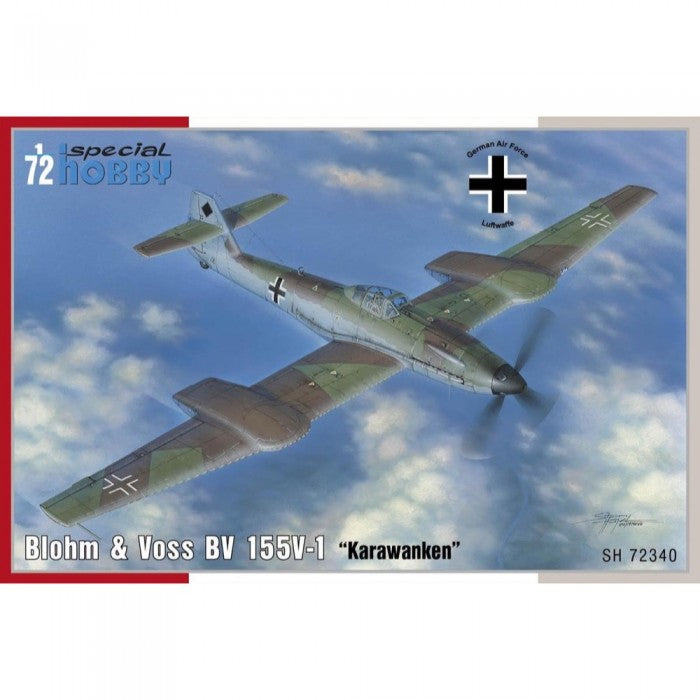
Special Hobby SH72340 1/72 Blohm & Voss BV 155V-1
15.00
$
<p>Blohm & Voss BV 155V-1 1/72</p>
<p>The Blohm Voss BV 155B was supposed to become just that weapon to stop the new American B-29 high altitude bombers. However, these magnificent machines were sent to the Pacific area and the development of the BV 155B was not brought to a successful finish. The development had really been rather complicated, originally taking place at Messerschmitt facility as the Me 155, originally designed as a naval fighter for theplanned but never finished Graf Zeppelin carrier. As the requirements of the RLM changed with time, the type was also redesigned to perform as a high altitude machine, the Me155B. The Messerschmitt development team was overburden with several other projects, so the RLM decided to transfer the project work to Blohm Voss, where, however, the Blohm Voss‘ chief designer Richard Voght considered the project to be quite bad and eventually redesigned it completely. The type’s designation changed as well to the BV155, and the new plane was much larger with a long span wing. A four-bladed propeller was driven by a turbo-charged DB 603U engine, with engine radiators hung under the wing. The first BV155V-1 made its maiden flight on 1 September 1944, quipped with a pressurised cockpit and a Rb 50/30 camera behind the pilot’s seat. The planned armament was to consist of a 30mm MK108 cannon in the propeller shaft and two 20mm MG151/20 cannon in the wings. Several problems occured during the first flights, although the team was able to tacke some of them eventually. Another two prototypes, the V- 2 and V-3 had also been partially built. Richard Voght considered also the BV155C, a version which was to have its radiator in the forward fuselage. The advancing British troops brought an end to all these plans when they seized the Blohm Voss factory and also Hamburg – Finkerwerder airfield. The RAF supposedly test-flown the BV155, at least an inventory number was assigned to the type. At first, the Bv155 was sent to the UK, consequently over the pond to the USA. Nowadays, the already incomplete machine is stored at theNational Air and Space Museum depository.</p>
<p>The model of this unique high altitude fighter prototype was already produced by our team and is no longer available. The model that we are going to offer you now is a completely new one, and some of its components are produced using metal moulds. The kit comes on three grey styrene sprues, one sprue sith clear parts and also contains two nicely detailed resin items. The decal sheet was expertly printed by Italian Cartograf.</p>
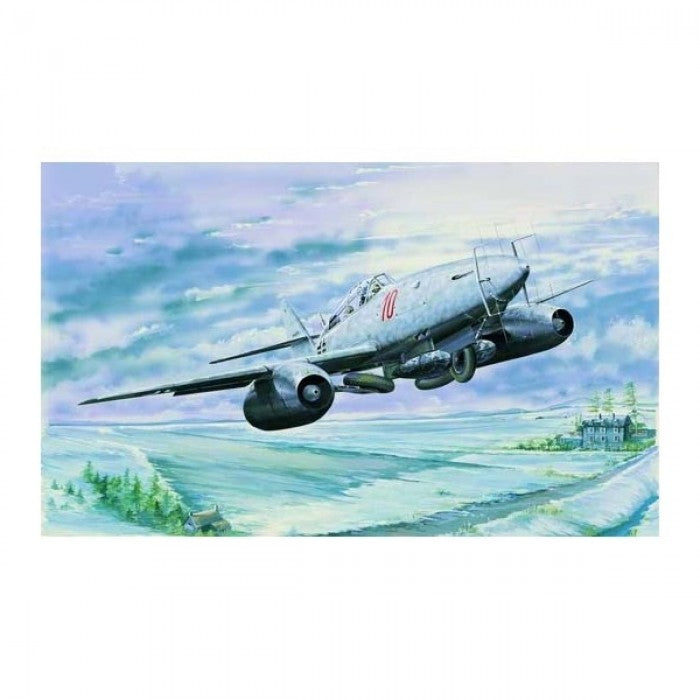
Trumpeter 02237 1/32 Messerchmitt Me 262 B-1a/U1
50.00
$
<p>The Me262 was the first and only fully operational jet-powered fighter aircraft developed during World War II. Because of the special handling characteristics of a jet-powered aircraft verses a propeller driven one, a two seat training conversion became necessary. This was designated the Me262B-1a, and was equipped with a second seat for the instructor along with full dual controls, and a pair of external fuel tanks. The need for the night fighter version out weighed the extra time it took to complete the modifications, so therefore it was decided to simply adopt the trainer version by adding the FuG218 Neptun radar system and the FuG350 Naxos heat sensing unit, which allowed the fighter to track the exhaust of the British planes. This was designated the Me262B-1a/U1, and the first of these aircraft were delivered to the experimental night fighting unit Kommando Welter during February - March of 1945. This unit served in the defense of Berlin and became NJG11, but by the end of the war, they had only received a dozen of these new jet aircraft</p>
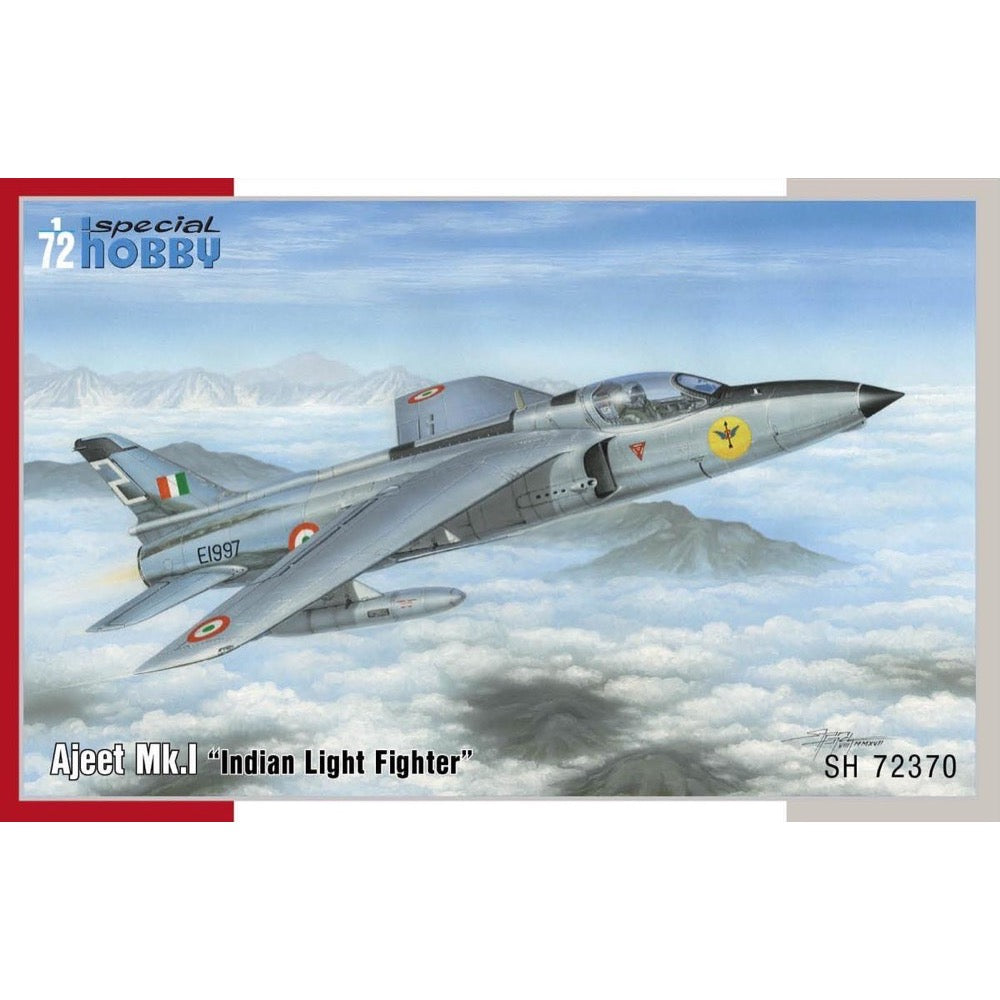
Special Hobby SH72370 1/72 HAL Ajeet Mk.I Indian Light Fighter
12.00
$
<p><strong>HAL Ajeet Mk. I “Indian Light Fighter” 1/72</strong></p>
<p>In 1950, WE Petter, who was famous for designs such as the Lysander, Whirlwind and Canberra joined Folland company. By this time modern jet aircraft were becoming bigger, more complex and expensive as their performance increased and as a result the development and operating costs were rising too. WE Petter decided to pursue a different approach to the modern jet-fighter philosophy by designing a light-weight fighter aircraft which was to have been powered by a pair of low thrust turbojet engines although this was later changed to a single power unit as their power output of jet engines increased. By choosing to build this new jet aircraft to the smallest overall dimensions possible and with only the very basic equipment required for the job this kept the total overall price down to only a third of the price of a standard jet fighter bomber of the day yet it would offer similar performance to these much bigger and more expensive jets. The initial design incorporated a pilot lying in a prone position in the nose of the aircraft and a twin engined configuration which was used in the Fo.139 Midge test aircraft which had been designed and built to assess the aerodynamical features of the future Gnat.</p>
<p>The Air Ministry ordered six trials aircraft off the drawing board during March 1955 all of which were delivered by 1956 and they underwent a very thorough set of flight tests, during which the design displayed excellent performance. The Gnat was found to be capable of high sub-sonic speeds, it was exceptionally manoeuvrable at high altitudes and due to its low weight and powerful engine the acceleration was phenomenal.</p>
<p>Two countries, Finland and India, found the results of these trials so very interesting that they decided to acquire the type for their air forces. Finland ordered twelve aircraft, ten of which were in a standard fighter configuration while two machines were adapted to carry out reconnaissance missions with cameras fitted in their nose. India acquired twenty-five complete machines of British origin while another twenty were provided in kit form to be assembled in India by HAL and HAL also acquired a licence to manufacture the Gnat in India. The Indian production line turned out at least one hundred and ninety-five airframe although the last two Indian Gnats were in fact prototypes of the improved Ajeet Mk.1 version. Production of this improved design began in 1976 and reached a total of seventy-nine Ajeets, with another ten Ajeets being created using modified Gnat airframes.</p>


